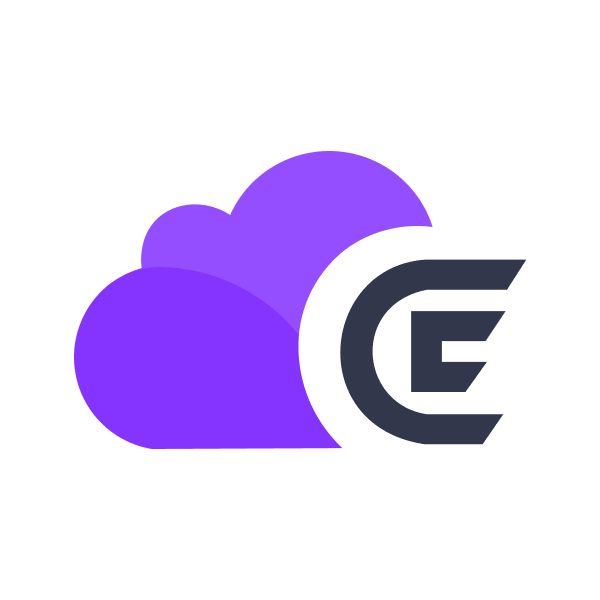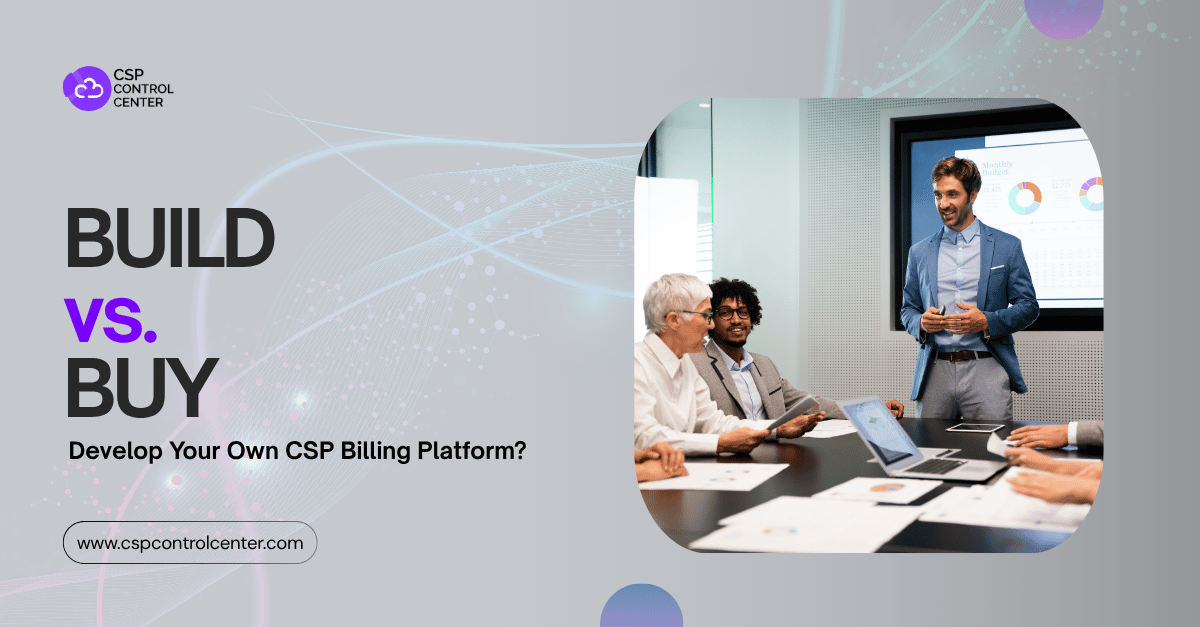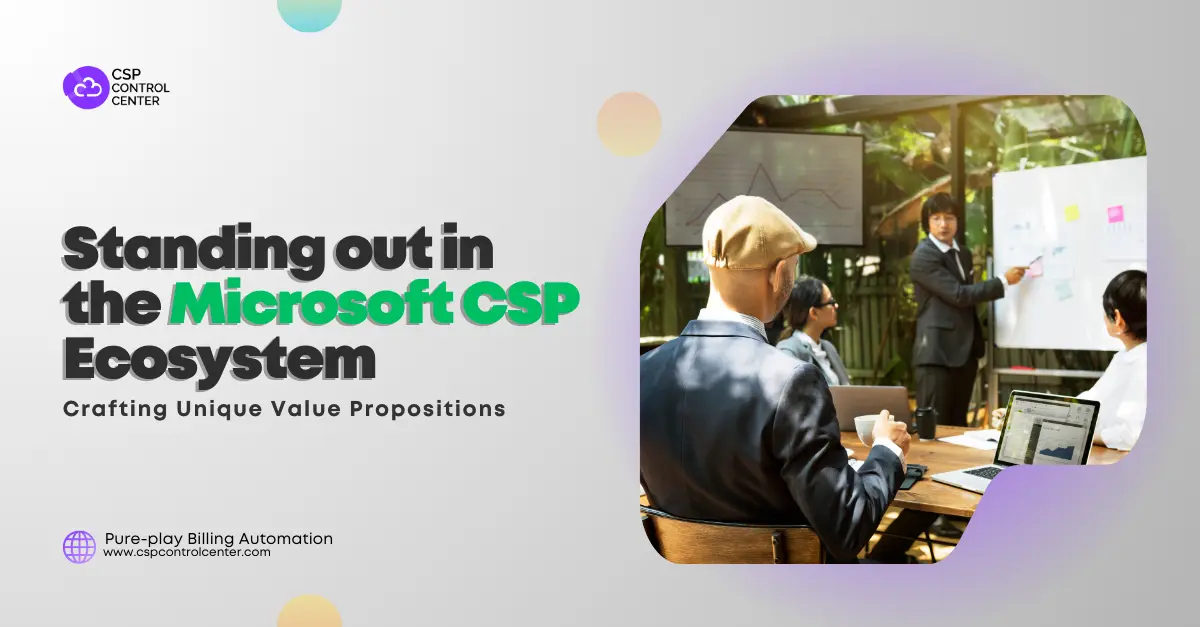In the ever-changing cloud landscape, keeping existing customers happy and getting repeat business can be challenging for Microsoft CSPs. Poor customer experience can turn valuable customers into lost accounts. Customer retention is vital to all types of businesses, including Microsoft CSPs. It is an important metric to measure the success of your Microsoft CSP business. By keeping your valued clients satisfied, you can maximize the revenue generated from each customer. You can learn how to calculate the customer retention rate here. There are several reasons customer retention is important for your Microsoft CSP business.
- Indicator of success– A higher customer retention rate shows that the customers are happy with the services, experience, and support offered by you. It also signifies that the customers see value in continuing the business association with you. It leads to customers looking at you as a trusted business advisor and not just a vendor.
- Steady income source– the higher the customer retention, the more stable will be your revenue. As a Microsoft CSP, you rely on customers renewing their subscriptions periodically. This allows you to have a predictable revenue stream that can help you plan your business investments, implement strategies, and operate your business smoothly.
- Cheaper than acquiring new customers– finding new customers is more costly and time-consuming than retaining existing ones. You need to invest in targeted marketing to identify leads and allocate resources to convert potential leads into paying customers. This can require multiple follow-ups by your sales team. After this, you need to invest time and resources in onboarding as well as initial handholding.
- Referrals and recommendations– Customers who have been doing business with you for a long time are more inclined to recommend your business to others. This can pass on valued referrals to you which can help you save time and money in identifying potential leads.
- Upselling and Cross-Selling Opportunities– Existing customers who are happy with your services are more likely to purchase new products or upgrade their existing subscriptions. When customers stay long-term with you, they are familiar with your business and trust your ability to deliver. As a Microsoft CSP, you can leverage this loyalty and offer advanced solutions and complementary services to your customers.
- Helpful feedback and insights– Long-term customers can provide you with valuable data and feedback that can help you design future marketing campaigns and adapt your offerings. As these customers have a deep understanding of your products and services, their feedback is vital in developing solutions and improving service delivery.
Even though customer retention is vital for Microsoft CSP’s business growth, there are several challenges you can face when it comes to retaining customers. Some of the typical challenges include:
- Fierce competition– The cloud services market is highly competitive and as a Microsoft CSP you will face stiff competition from other providers offering similar solutions. This fierce competition means that your customers have multiple options to choose from if they are unhappy with your service or are able to find a better deal elsewhere. This puts constant pressure on you to differentiate your offerings, provide high service quality, and at the same time remain competitive on price.
- Providing excellent service– Customers expect you to provide quick and practical solutions to all their problems. They count on you to be available 24/7 to help with technical issues, billing-related information, or any other query. To deal with technical problems, you need to have highly skilled support teams with deep technical expertise. This can require considerable investment in terms of money and time. If you are unable to provide excellent customer service, your customers will be likely to switch to a different provider.
- Spotting at-risk customers– Without advanced data analytics tools and expertise, it can be difficult for Microsoft CSPs to identify customers who are at risk of switching over to a competitor. If you are unable to identify at-risk customers, you will not be able to proactively address their concerns and lose the chance of retaining them.
- Delivering value– Customers are constantly looking to improve their productivity and save costs. If you are unable to provide value to your customers, they will easily switch to a competitor offering more value. Customers can also seek a clear return on investment (ROI) from the solutions they buy from you. At times it can be difficult to quantify and demonstrate the ROI effectively.
- Offering personalized experiences– To retain customers, you need to provide personalized experiences to them. These can include personalized communications, customized invoices, etc. Personalized experiences result in customer satisfaction and loyalty but tailoring solutions and services to meet the varying needs of a diverse customer base can be quite resource intensive. Personalization can be challenging if you lack the right resources and expertise needed to customize a customer’s journey.
Common Manual Processes and their Impact on Microsoft CSPs
As a Microsoft CSP, you might be using several manual processes to run your business operations. Some of the common processes that are part of the Microsoft CSP business include:
Onboarding new customers
Customer onboarding manually can be complex as it involves collecting and processing customer information such as their contact details, billing details, etc. along with contracts and agreements.
Managing orders
As a Microsoft CSP, you need to place and track orders for Microsoft licenses and subscriptions on behalf of your customers. Creating, processing, and tracking orders manually can be time-consuming and prone to errors.
Provisioning
After procuring licenses, you are responsible for configuring and deploying the services for your customers.
Usage tracking
You need to monitor and track the usage by your customers to ensure that they are compliant with Microsoft’s licensing terms.
Billing and invoicing
Another responsibility of being a Microsoft CSP is to generate invoices for each customer based on their usage and subscription terms. While generating invoices you also need to consider if there are any price changes or changes in the subscription during the billing period.
Customer support
Customers depend upon you for support related to Microsoft services, billing, etc. You need to handle support requests and troubleshoot issues that require extensive knowledge of Microsoft’s products and services.
Renewal management
You also need to keep track of subscriptions that are due to expire, inform customers of upcoming renewals, and ensure that the subscriptions are renewed on time so that there is no disruption to the customers’ services.
Tracking payments
You need to keep a record of payments made by customers. This involves documenting the payment amount, mode of payment, date, and any other relevant information related to payment. Then you need to reconcile this payment information with the invoices to avoid any discrepancies.
Manual processes can be harmful to your Microsoft CSP business. It can impact various aspects of your business operations and overall performance. Some of the negative consequences of using manual processes for your business are:
Reduced productivity
Carrying out repetitive tasks manually can be time-consuming and resource intensive. Certain activities such as order management, billing, subscription renewals, customer communication, etc. When done manually leads to an increase in the workload of your staff. Manual tasks are also prone to errors that will require your staff to rework to fix the mistakes. This can result in stress, burnout, and loss of motivation which reduces operational efficiency and productivity.
Lost revenue
A delay in processing orders or errors in billing can result in a loss of revenue. Errors or delays in billing such as underbilling the customers can cause revenue leakages and late payments. If you are manually tracking customer usage, you might miss opportunities to upsell additional services to your customers.
Increased costs
Relying heavily on manual processes will increase the operational costs of your business. One of the significant costs associated with manual workloads is the increase in labor costs. You will need to dedicate more staff time and resources to completing repetitive and mundane tasks as well as resolving disputes caused due to human errors. Hiring a large workforce will increase your payroll costs, training costs, and other costs associated with staffing.
Decreased customer satisfaction
Manual processes can lead to delays in customer onboarding, order processing, invoice generation, customer communication, and troubleshooting of issues. Also, manual processes are completely dependent on humans and can cause errors in order placement, provisioning, billing, etc. The delays and errors can contribute to increased frustration is dissatisfaction amongst customers.
Security risks
As a Microsoft CSP, you need to handle substantial amounts of sensitive data of customers including user credentials, billing, and financial data. If this type of data is handled manually, it increases the likelihood of leakage or unauthorized access to customer data. Data breaches not only impact the business’s reputation but can also lead to legal issues and regulatory fines.
Benefits of Automation in CSPs
Automation can offer a wide range of benefits for your Microsoft CSP business. It can serve as a powerful tool that can help you improve efficiency, streamline processes, reduce turnaround time, and maximize profits. Let us have a closer look at the advantages of automating your Microsoft CSP business.
Improved productivity
Automating repetitive processes such as billing, provisioning, customer communication, etc., can boost the productivity of your business. It will reduce the workload of your employees and allow them time to focus on strategic activities that can add more value to your business. Automation tools can handle multiple tasks at the same time which speeds up the processes.
Cost savings
Automation will allow you to reduce the number of resources needed to complete tasks resulting in cost savings for your Microsoft CSP business. You can significantly save costs by lowering your payroll and associated costs. The initial cost of setting up automation solutions can be high, but they pay for themselves over time as they are cheaper in the long run as compared to hiring and training a large workforce.
Scalability
As your Microsoft CSP business grows your customer base and portfolio of services will also expand. To accommodate the growing demand, you will need to scale your operations quickly and efficiently. Manual processes are not scalable and will hinder your growth. Automated processes are scalable and will allow you to easily manage the increased workload and customer base without the need to hire a large number of additional employees.
Error minimization
Even highly skilled and attentive employees can make mistakes from time to time. By reducing the risk of human errors, automation can help you minimize errors and improve accuracy and reliability. Automation reduces the risk of errors in processes such as data entry, billing, provisioning etc. which can save time and costs involved in rectifying errors.
Better business insights
Automation helps you collect, process, and analyze customer data effectively as these processes are much easier to track. Automation tools can provide you valuable business insights that can help you take informed business decisions based on real-time data. These actionable insights can help to adjust your pricing models, identify opportunities for upselling and cross-selling, provide more effective support, target new markets, predict customer churn, etc. According to a survey by Gartner Inc., “80% of executives think automation can be applied to any business decision.” You can read our blog to learn more about harnessing customer insights for Microsoft CSP success.
Enhanced customer experience
Automating certain processes can have a positive impact on customer experience. Automated processes lead to faster delivery of services, shorter wait time for customers, data driven personalization which improve the overall customer experience. Automation tools with self-service features further enhance the customer experience by empowering customers to access and manage their subscriptions 24/7.
Best Practices for Automating CSP Processes
To enhance the operational efficiency of your business and improve customer satisfaction you need to adopt automation. Here are some of the best practices you can follow to implement automation in your Microsoft CSP business.
Identify processes that can be automated
Before you start implementing automation you need to identify the process that can be automated. For this list down all the manual processes that are repetitive and time-consuming, out of these select the ones which if automated will increase productivity and reduce costs. Some of the processes that you can consider automating are- customer onboarding, provisioning, catalog management, usage tracking, generating invoices, sending subscription-related notifications and reminders, etc.
Selecting the right tools
Once you have shortlisted the process that will benefit the most from automation the next step is to select the correct automation tools. This is a critical step as the choice of automation tools will impact the success of your automation efforts. When choosing automation tools look for ones that can handle business growth such as an increase in the number of invoices that need to be generated and other related billing tasks. The automation tools should be easily customizable to align with the needs of your business and provide reliable business insights. Also ensure that the automation tools seamlessly integrate with any other software such as accounting, bookkeeping, Customer Relationship Management (CRM) software that you might be currently using. If you are looking to automate your billing system then read our blog, Top 9 features to look for in your Microsoft CSP billing tool.
Training employees
Transitioning from manual processes to automated processes requires training the employees to use the automation tools effectively. Training will empower your employees to extract the maximum benefit from the automated process and also help them troubleshoot any problems they might face while working with the automation tools. Before you begin training you need to make your team understand the rationale behind automation and how it will benefit them and the business. Different employees will require different levels of training depending upon their roles and responsibilities. You can prepare customize training plans for different levels of employees. You should also provide your employees with comprehensive documentation for the automation tools. Training should be a continuous process, so offer additional trainings whenever there are any updates or changes in the automation tools.
Monitoring the effectiveness
Once automation is implemented you need to monitor it regularly to assess it effectiveness. By doing this you will be able to identify any issues and take appropriate and timely action. For Microsoft CSP billing automation tools, you can monitor the billing accuracy, processing time, customer feedback, cost savings due to reduction in revenue leakages, improvement in payment collection, etc.
Apart from this you should periodically identify the areas where there is scope for improvement and implement process optimization.
Automate Microsoft CSP billing with C3
C3 offers you the ultimate Microsoft CSP billing solution that can completely transform your billing system. When you partner with C3, you get:
- Access to a user-friendly yet incredibly effective interface equipped with intuitive features that are designed to serve both you as well as your end customers.
- Automated invoicing and adjustment system using which you can send invoices to your customers automatically, based on their preferences. The invoices can be customized as per your customer’s requirements. C3 can also handle advance payments and manage adjustments.
- C3 supports a wide range of integrations that effortlessly connect your operations, eliminating the need for any manual intervention. The PSA integrations include ConnectWise Manage and Datto Autotask.
- The in-depth reporting capabilities of C3 provide you with valuable data, analytics, and insights that can help you acquire new customers and retain existing ones.
Get in touch with us to know more about how we can help you automate billing and help your business grow.

 CSP Control Center
CSP Control Center
 CloudEvents
CloudEvents


